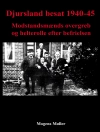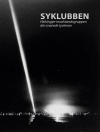That Hitler’s Gestapo harshly suppressed any signs of opposition inside the Third Reich is a common misconception. This book presents studies of public dissent that prove this was not always the case. It examines circumstances under which “racial” Germans were motivated to protest, as well as the conditions determining the regime’s response. Workers, women, and religious groups all convinced the Nazis to appease rather than repress “racial” Germans. Expressions of discontent actually increased during the war, and Hitler remained willing to compromise in governing the German Volk as long as he thought the Reich could salvage victory.
สารบัญ
List of Illustrations
Preface
Introduction: Nazi Responses to Popular Protest in the Reich
Nathan Stoltzfus
Chapter 1. Aspects of German Procedures in the Holocaust
Gerhard L. Weinberg
Chapter 2. Women and Protest in Wartime Nazi Germany
Jill Stephenson
Chapter 3. The Demonstrations in Support of the Evangelical Land Bishop Hans Meiser: a Successful Protest against the Nazi Regime?
Christiane Kuller
Chapter 4. The Catholic Church, Bishop von Galen and ‘Euthanasia’
Winfried Süß
Chapter 5. The Possibilities of Protest in the Third Reich: The Witten Demonstration in Context
Julie Torrie
Chapter 6. The ‘Legend’ of Women’s Resistance in the Rosenstrasse
Katharina von Kellenbach
Chapter 7. Auschwitz, the ‘Fabrik-Aktion’, Rosenstrasse: A Plea for a Change of Perspective
Joachim Neander
Chapter 8. The 1943 Rosenstrasse Protest and the Churches
Antonia Leugers
Chapter 9. Protest and Aftermath: Popular Protest in Nazi German History
Nathan Stoltzfus
Afterword: Protest and Resistance
David Clay Large
APPENDIX: TRANSLATED DOCUMENTS
Appendix I: The Situation of the ‘Mischlinge’ in Germany, Mid-March 1943, by Gerhard Lehfeldt
Appendix II: Decree Regarding the Removal of Jews from Frankfurt/Oder Factories, February 25, 1943
Appendix III: April 1, 1943 OSS document identifying Protest in Berlin with the Interruption of Deportation of Jews
Appendix IV: Translated Excerpts from the Diaries of Joseph Goebbels, Die Tagebücher von Joseph Goebbels, ed. Elke Frölich (Munich: K.G. Saur)
Appendix V: Excerpts from testimonies of women who protested for their Jewish husbands in response to a request from the Berlin Bureau of Reparations, 1955.
Appendix VI: Excerpts of Individual Sections and Paragraphs from Legal Texts and Ordinances (1933-1941)
Appendix VII: RSHA Guidelines for Deportation to Auschwitz, Berlin, February 20, 1943
Appendix VIII: Documents of the SS at Auschwitz from early March 1943 indicating their “pull” for workers from Berlin and their expectation that more working Jews (intermarried) would be sent from Berlin
Appendix IX: Documents in response to the Witten Protest and from 1944 indicating Hitler’s continuing refusal to use force against “racial” civilians who refused to follow regime guidelines for evacuating bombed areas.
Appendix X: Excerpts from the recent German press representing controversies about public protest by ordinary Germans in the Third Reich.
Select Bibliography
Index
เกี่ยวกับผู้แต่ง
Birgit Maier-Katkin is Associate Professor of German at Florida State University. She is author of Silence and Acts of Memory: A Postwar Discourse on Literature, History, Anna Seghers, and Women in the Third Reich (Bucknell University Press, 2007).












